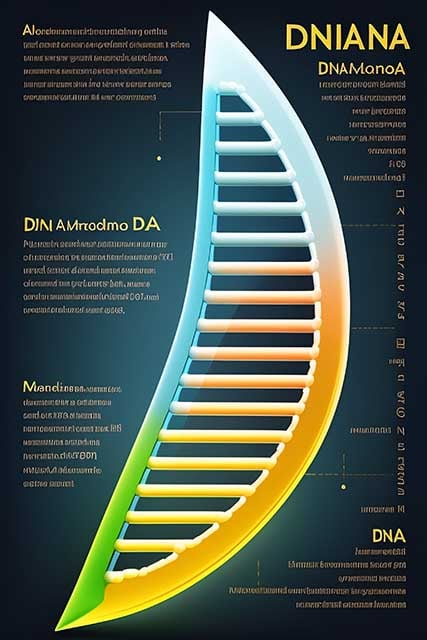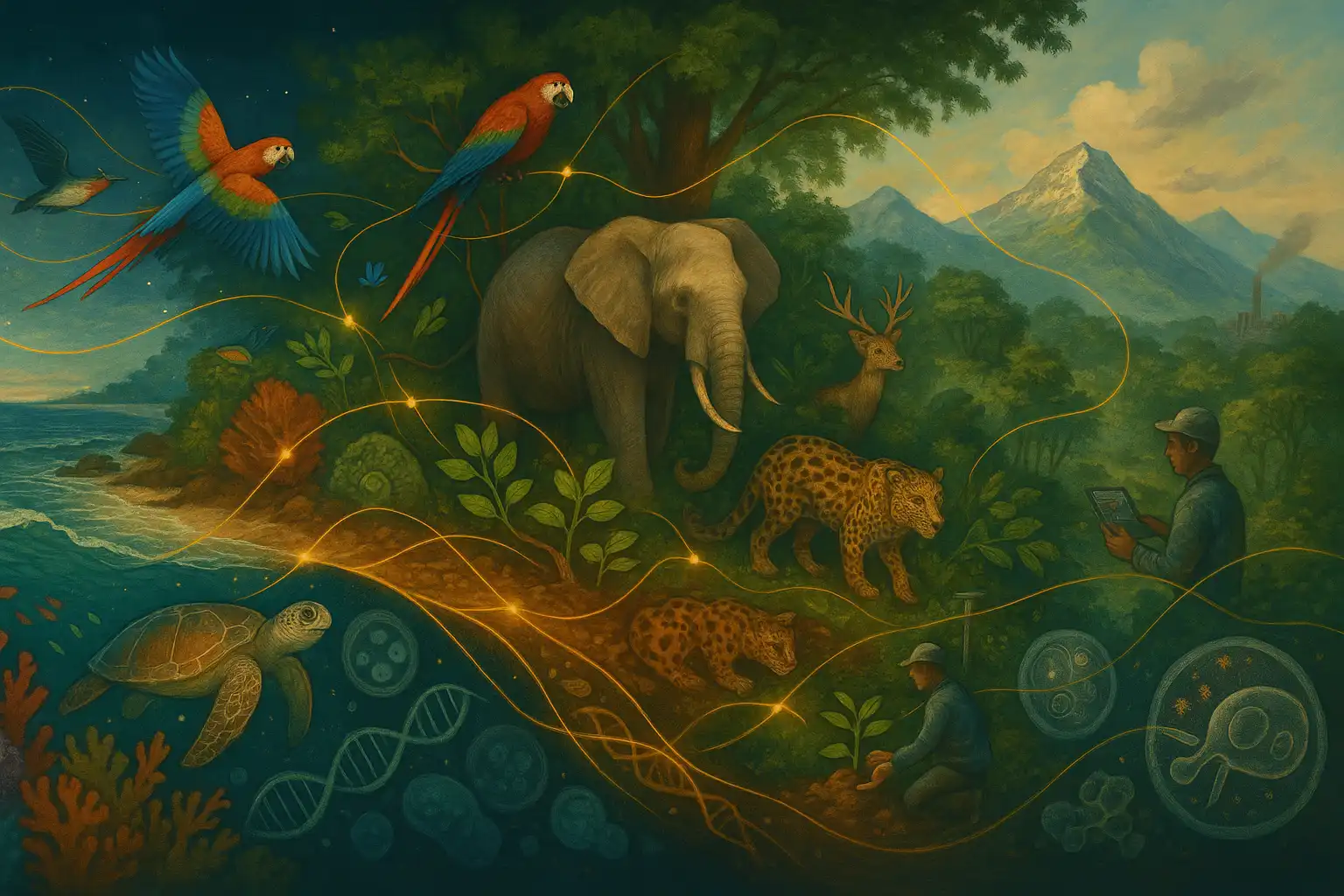Contents
- Introduction: The Intricacies of Biodiversity
- Simpson's Diversity Index: A Tool for Comparing Biodiversity
- Simpson's Reciprocal Index: A Variation of the Original Formula
- Comparing Species Diversity in Two Ecosystems: A Practical Example
- Interpreting the Results: Which Ecosystem Has Higher Species Diversity?
- The Importance of Measuring Biodiversity
- The Role of Biodiversity in Ecosystem Services
- Conservation Efforts and Biodiversity Monitoring
- Conclusion: The Significance of Simpson's Diversity Index in Biodiversity Conservation
Introduction: The Intricacies of Biodiversity
Biodiversity is a term that encompasses the variety of life on Earth, and it is often mistakenly thought to refer solely to the number of organisms living in a particular area. However, it is essential to understand that biodiversity is a multifaceted concept that goes beyond species count. In this article, we will focus on species diversity, which is a crucial aspect of the value of biodiversity. Species diversity is composed of two elements: species richness (the number of species present) and species evenness (the relative population of each species). An ecosystem with a single dominant species will have lower evenness and, consequently, lower species diversity.
Simpson's Diversity Index: A Tool for Comparing Biodiversity
 To effectively compare the biodiversity of two ecosystems or track changes in biodiversity over time within a single ecosystem, scientists use a mathematical tool called Simpson's Diversity Index. This index calculates a value that represents the biodiversity of an ecosystem by taking into account both species richness and evenness. In the formula, uppercase N represents the total number of organisms, lowercase n represents the population of each individual species, and D is the diversity index. A higher value for D indicates greater biodiversity.
To effectively compare the biodiversity of two ecosystems or track changes in biodiversity over time within a single ecosystem, scientists use a mathematical tool called Simpson's Diversity Index. This index calculates a value that represents the biodiversity of an ecosystem by taking into account both species richness and evenness. In the formula, uppercase N represents the total number of organisms, lowercase n represents the population of each individual species, and D is the diversity index. A higher value for D indicates greater biodiversity.
Simpson's Reciprocal Index: A Variation of the Original Formula
There are several variations of Simpson's Diversity Index, and one such variation is Simpson's Reciprocal Index. This specific version of the index is used in the following example to demonstrate how it works in practice.
Comparing Species Diversity in Two Ecosystems: A Practical Example
To illustrate the application of Simpson's Reciprocal Index, let's compare the species diversity of plants in two ecosystems, A and B. We will use a table to input the numbers and follow the necessary steps to calculate the diversity index for each ecosystem.
1. First, list the species present in each ecosystem and their respective populations.
2. Calculate the proportion of each species in the ecosystem by dividing the population of each species by the total number of organisms (uppercase N).
3. Square the proportion of each species and sum up the squared proportions for all species in the ecosystem.
4. Finally, calculate the reciprocal of the sum obtained in step 3 to obtain the Simpson's Reciprocal Index (D) for each ecosystem.
After performing these calculations, we find that ecosystem A has a Simpson's Reciprocal Index value of 2.28, while ecosystem B has a value of 3.39.
Interpreting the Results: Which Ecosystem Has Higher Species Diversity?
By using Simpson's Diversity Index, we can now determine that ecosystem B has a higher value (3.39) than ecosystem A (2.28). This indicates that ecosystem B has greater species diversity, taking into account both species richness and evenness. This method allows for a more accurate comparison of biodiversity between ecosystems or over time within a single ecosystem.
The Importance of Measuring Biodiversity
Understanding and measuring biodiversity is crucial for several reasons. Biodiversity plays a vital role in maintaining the health and stability of ecosystems, as well as providing essential goods and services to human societies. By using tools like Simpson's Diversity Index, scientists and conservationists can better assess the state of ecosystems, identify areas of high biodiversity that require protection, and monitor the effectiveness of conservation efforts over time.
The Role of Biodiversity in Ecosystem Services
Biodiverse ecosystems provide a wide range of services that are essential for human well-being. These services include provisioning services, such as food, water, and raw materials; regulating services, such as climate regulation, water purification, and pollination; cultural services, such as recreational, aesthetic, and spiritual benefits; and supporting services, such as nutrient cycling and soil formation. By maintaining high levels of biodiversity, we can ensure the continued provision of these vital ecosystem services.
Conservation Efforts and Biodiversity Monitoring
Conservation efforts aimed at preserving biodiversity are essential for the long-term health of our planet. By using tools like Simpson's Diversity Index, conservationists can identify areas of high biodiversity that require protection and monitor the effectiveness of their efforts over time. This information is invaluable for guiding conservation strategies and ensuring that our planet's ecosystems remain healthy and resilient.
Conclusion: The Significance of Simpson's Diversity Index in Biodiversity Conservation
In conclusion, biodiversity is a complex concept that goes beyond merely counting the number of species in an ecosystem. By using Simpson's Diversity Index, we can gain a more accurate understanding of species diversity, taking into account both species richness and evenness. This knowledge is essential for the effective management and conservation of our planet's precious ecosystems. By understanding and measuring biodiversity, we can work towards preserving the health and stability of our ecosystems, ensuring the continued provision of essential goods and services to human societies. Furthermore, tools like Simpson's Diversity Index allow scientists and conservationists to identify areas of high biodiversity that require protection and monitor the effectiveness of conservation efforts over time. Ultimately, embracing the complexities of biodiversity and utilizing tools like Simpson's Diversity Index will play a crucial role in safeguarding our planet's ecosystems for future generations.
FAQ
1. What is biodiversity?
Biodiversity refers to the variety of life on Earth, encompassing the different species, genes, and ecosystems. It is a multifaceted concept that goes beyond just the number of organisms living in a particular area.
2. What is species diversity?
Species diversity is a crucial aspect of biodiversity, consisting of two elements: species richness (the number of species present) and species evenness (the relative population of each species).
3. What is Simpson's Diversity Index?
Simpson's Diversity Index is a mathematical tool used by scientists to compare the biodiversity of two ecosystems or track changes in biodiversity over time within a single ecosystem. It calculates a value that represents the biodiversity of an ecosystem by taking into account both species richness and evenness.
4. What is Simpson's Reciprocal Index?
Simpson's Reciprocal Index is a variation of the original Simpson's Diversity Index formula. It is used to calculate the diversity index for an ecosystem by taking the reciprocal of the sum of the squared proportions of each species in the ecosystem.
5. How can Simpson's Diversity Index be used to compare ecosystems?
By calculating the Simpson's Diversity Index value for each ecosystem, we can determine which ecosystem has greater species diversity, taking into account both species richness and evenness. A higher value indicates greater biodiversity.
6. Why is measuring biodiversity important?
Measuring biodiversity is crucial for maintaining the health and stability of ecosystems, providing essential goods and services to human societies, and guiding conservation efforts. Tools like Simpson's Diversity Index help scientists and conservationists assess the state of ecosystems, identify areas of high biodiversity that require protection, and monitor the effectiveness of conservation efforts over time.
7. What are ecosystem services?
Ecosystem services are the benefits that humans derive from ecosystems. They include provisioning services (e.g., food, water, raw materials), regulating services (e.g., climate regulation, water purification, pollination), cultural services (e.g., recreational, aesthetic, spiritual benefits), and supporting services (e.g., nutrient cycling, soil formation).
8. How can Simpson's Diversity Index be used in conservation efforts?
Conservationists can use Simpson's Diversity Index to identify areas of high biodiversity that require protection and monitor the effectiveness of their efforts over time. This information is invaluable for guiding conservation strategies and ensuring that our planet's ecosystems remain healthy and resilient.



